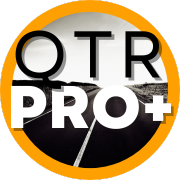2.4.0 Hazardous Materials Compliance: PPE & Product Identification
The Company furnishes the required personal protective equipment (PPE) and safety equipment such as fire extinguishers, reflectors, spill pads, gloves, hard hats, and eye protection. It is the driver’s responsibility to make sure he/she has these items in the transport unit and they are in proper working order. Hard hats, goggles, appropriate slip-resistant sole shoes, and gloves shall be worn while handling any type of product. Vapor recovery, safety cones, and other required safety or environmental equipment must be used in the prescribed manner.
REFER TO:
K-1 LOADING AND DELIVERY POLICY: KSP 1.03
GAS AND DIESEL DELIVERY POLICY: KSP 1.05
Description of Products
- Branded Products (Shell, Exxon, Amoco, etc.) – stations have Branded Logo on store sign – refer to trip ticket
- Unbranded Products (Flint Hills, TPSI, Valero, etc.) – should not be delivered to a branded station unless specifically instructed to do so by dispatcher
- Unleaded Gasoline (conventional, NON-ETHANOL, any grade: 87, 89, 90, 93)
- UL (regular unleaded – 87 octane, 87E10, up to 10% Ethanol)
- MG (mid-grade unleaded - 89 octane, 89E10, up to 10% Ethanol)
- S (super or premium unleaded – 93 octane, 93E10, up to 10% Ethanol)
- 90REC (90 octane – NON-ETHANOL)
- RFG (reformulated gasoline products with ETHANOL – VIRGINIA ONLY)
- Ultra-Low Sulfur Diesel (ULSD) – Clear (for on road use only-used in vehicles manufactured in 2006 or later)
- Dyed Ultra Low Sulfur Diesel (Dyed ULSD) – Dyed (off road use only – no road taxes)
- Bio Diesel – Blended with ULSD for a more environmentally friendly fuel source
- Fuel Oil – No. 2 (Heating Oil)
- Clear Kerosene (CK-1) – contains no dye – used for winter blend diesel
- Dyed Kerosene (K-1) – used primarily for space heaters
API Color Symbols System
There is no fixed rule concerning color code for fill pipes; however, there is a general industry standard that guides most marking systems in use by our customers (Refer to APPENDIX A-4: API Color Symbols System).
Fire code requires each fill pipe for motor fuel at a service station to have a label or must be painted a particular color to represent the product in the tank. Furthermore, there must be a key or code chart for such color painting available inside the station office and every employee should be aware of the location of the color code at the station. If a Standards Division Inspector (NCDA) visits the station, they must be able to determine what fill pipe represents what product and there must be a (color code) chart available to spell it out. Just using "memory" will not suffice.
As to what colors are best for the various fuels sold, each customer may use their own scheme, but the recommendations of the American Petroleum Institute (API) are shown on the chart as shown on APPENDIX A-4: API Color Symbols System.
Anytime there is the slightest doubt as to color codes or what products that customer has “stop and call dispatch.”


